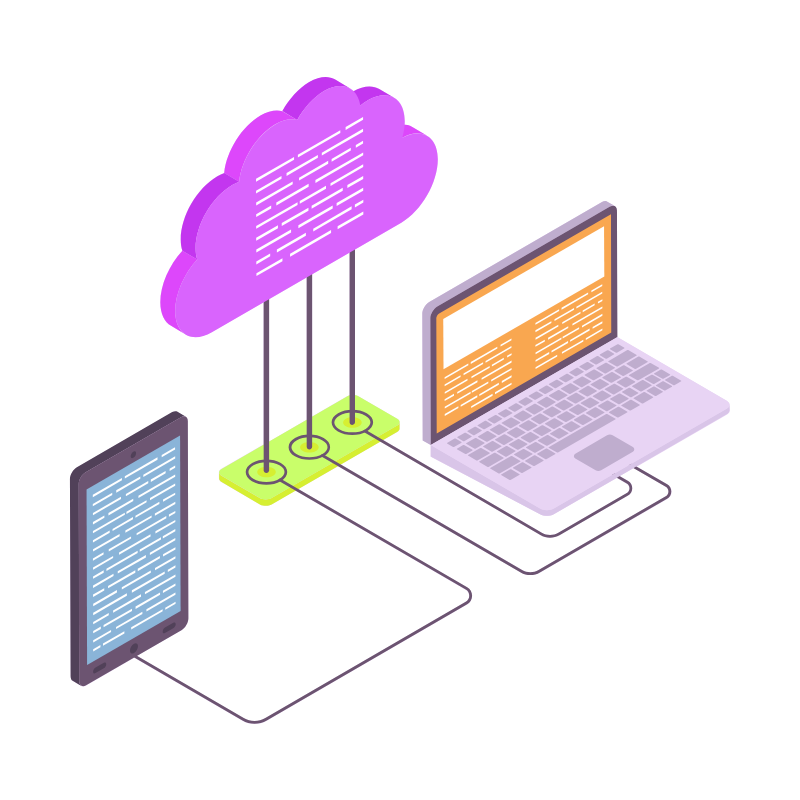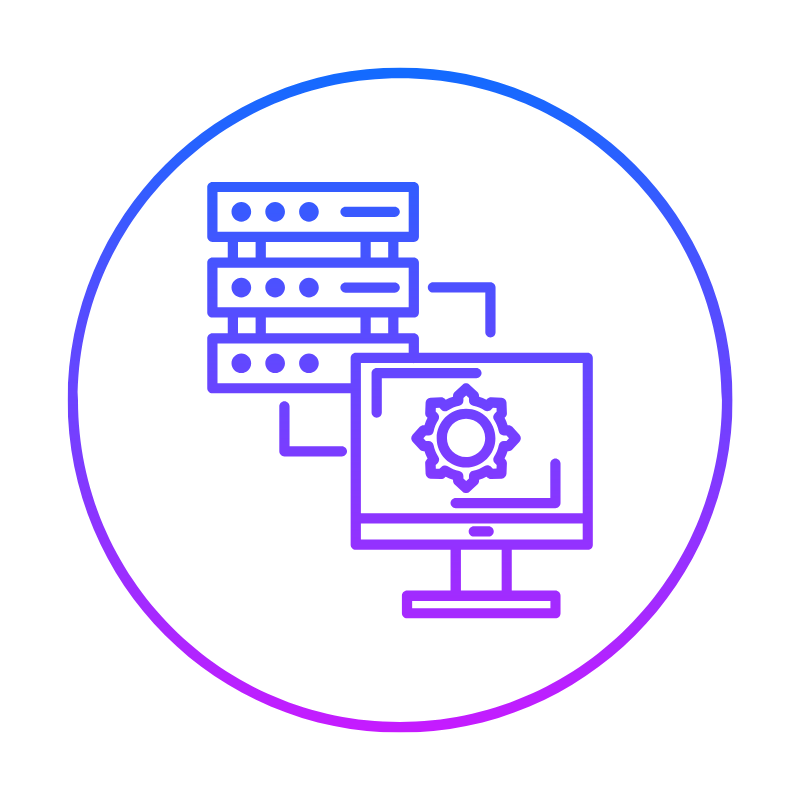Pay attention, because I’m about to drop some truth bombs.
If you’re running an online store in the Philippines and you’re not focusing on SEO, you’re leaving money on the table.
Period.
In a country where internet penetration is skyrocketing and e-commerce is booming, SEO for an online store in the Philippines isn’t just important – it’s crucial.
But here’s the kicker: SEO in the Philippines isn’t the same as SEO anywhere else.
You need to understand the local market, the unique online behaviors of Filipino consumers, and the specific challenges of the Philippine digital industry.
In this guide, I’m going to break down exactly how to do SEO for an online store in the Philippines.
No fluff, no BS – just actionable strategies that will drive more organic traffic to your store and boost your sales.
Whether you’re just starting out or you’re looking to step up your SEO game, this guide is your roadmap to dominating the search results in the Philippine market.
Ready to take your online store to the next level?
Let’s dive in.
What You’ll Need for SEO in Your Philippine Online Store
Before we get into the nitty-gritty of SEO strategies, let’s talk about what you’ll need to effectively implement SEO for an online store in the Philippines.
Think of this as your SEO toolkit:
- Keyword research tools: Google Keyword Planner is free and a great start. As you grow, consider investing in tools like SEMrush or Ahrefs.
- Analytics software: Google Analytics is a must. It’s free and powerful.
- Search Console: Google Search Console gives you insights into how your site performs in search results.
- On-page SEO tools: Yoast SEO for WordPress is excellent. If you’re not using WordPress, consider tools like Screaming Frog.
- Page speed tools: Google PageSpeed Insights is free and gives you actionable recommendations.
- Mobile-friendly test: Use this Mobile-Friendly Test tool to ensure your site works well on smartphones.
- Backlink analysis tools: Ahrefs or Moz can help you understand and improve your link profile.
But here’s the truth: tools are just tools.
What really matters is how you use them and the skills you develop.
You need to focus on these key areas:
- Technical SEO: Understanding how to make your site crawlable and indexable.
- On-page SEO: Knowing how to optimize your content and HTML source code.
- Content creation: The ability to create valuable, engaging content that resonates with Filipino consumers.
- Link building: Skills to earn high-quality backlinks from reputable Philippine websites.
- Local SEO: Understanding how to optimize for local search in the Philippines.
Now, let’s talk budget.
The good news?
You can start implementing SEO for an online store in the Philippines with minimal investment.
Many of the tools I mentioned have free versions.
Content creation can be done in-house.
But as your store grows, be prepared to invest in:
- Premium SEO tools (budget around ₱5000-10000 per month)
- Professional SEO services or consultants (costs vary widely)
- Content creation and link building (if outsourcing)
Remember, SEO is an investment, not an expense.
Every peso you spend should bring returns in the form of increased organic traffic and sales.
Track your ROI religiously.
Now that we’ve got our toolkit ready, let’s dive into the step-by-step process of how to do SEO for an online store in the Philippines.
Step-by-Step Guide to SEO for an Online Store in the Philippines
1. Conduct Keyword Research
Keyword research is the foundation of any solid SEO strategy.
Here’s how to do it right for the Philippine market:
Start with Google Keyword Planner:
- Use it to find keywords related to your products
- Pay attention to search volume and competition
Focus on local intent:
- Use Philippine-specific keywords (e.g., “online clothing store Philippines”)
- Consider regional variations (e.g., “online ukay-ukay Cebu”)
Analyze your competitors:
- Use tools like SEMrush to see what keywords your competitors are ranking for
- Look for gaps you can exploit
Don’t ignore long-tail keywords:
- These are often less competitive and can drive highly targeted traffic
- Example: “affordable handmade leather shoes Manila”
Consider Filipino language and slang:
- Use Tagalog or Taglish keywords where appropriate
- Example: “murang sapatos online”
Pro tip: Use Google Trends to understand seasonal fluctuations in keyword popularity in the Philippines.
Warning: Don’t stuff your content with keywords. Google’s algorithms are smart enough to understand context and synonyms.
2. Optimize On-Page Elements
On-page optimization is crucial for SEO for an online store in the Philippines.
Here’s what you need to focus on:
Title tags:
- Include your target keyword
- Keep it under 60 characters
- Make it compelling for Filipino users to click
Meta descriptions:
- Write a concise summary of the page content
- Include your target keyword naturally
- Use a call-to-action to encourage clicks
Header tags (H1, H2, H3):
- Use your target keyword in the H1 tag
- Structure your content logically with H2 and H3 tags
URL structure:
- Keep URLs short and descriptive
- Include your target keyword
- Use hyphens to separate words
Image optimization:
- Use descriptive file names
- Include alt text for all images
- Compress images to improve load time
Internal linking:
- Link to relevant products and categories within your site
- Use descriptive anchor text
Tool recommendation: Use Yoast SEO (for WordPress) or Screaming Frog to audit your on-page elements.
Remember: On-page optimization is not just about pleasing search engines. It’s about improving user experience for your Filipino customers.
3. Improve Site Structure and Navigation
A well-structured site is crucial for both search engines and users.
Here’s how to optimize your site structure for SEO for an online store in the Philippines:
Create a logical hierarchy:
- Organize products into clear categories and subcategories
- Example: Electronics > Smartphones > Android Phones
Implement breadcrumbs:
- Help users (and search engines) understand where they are on your site
- Example: Home > Electronics > Smartphones > Samsung Galaxy S21
Optimize your menu structure:
- Make it easy for users to find what they’re looking for
- Use descriptive labels in Filipino or English (depending on your target audience)
Create a sitemap:
- Generate both HTML and XML sitemaps
- Submit your XML sitemap to Google Search Console
Use canonical tags:
- Avoid duplicate content issues, especially for products with multiple variants
Implement schema markup:
- Use product schema to provide rich snippets in search results
- Include price, availability, and reviews
Pro tip: Use Google Search Console to monitor how Google is crawling and indexing your site.
Warning: Avoid creating orphan pages (pages with no internal links pointing to them).
4. Enhance Site Speed and Mobile-Friendliness
In the Philippines, where internet speeds can be challenging and mobile usage is high, site speed and mobile-friendliness are critical for SEO success.
Here’s how to optimize:
Improve page load time:
- Compress images and use next-gen formats like WebP
- Minify CSS, JavaScript, and HTML
- Leverage browser caching
- Use a Content Delivery Network (CDN)
Optimize for mobile:
- Use a responsive design
- Ensure text is readable without zooming
- Make buttons and links easy to tap on mobile
Implement Accelerated Mobile Pages (AMP):
- Consider using AMP for product pages to improve mobile loading speed
Reduce server response time:
- Choose a reliable hosting provider with servers in or near the Philippines
- Optimize your database queries
Eliminate render-blocking resources:
- Load critical CSS inline
- Defer non-critical JavaScript
Tool recommendation: Use Google PageSpeed Insights to identify specific areas for improvement.
Remember: A fast, mobile-friendly site not only helps with SEO but also improves user experience and can increase conversions.
5. Create High-Quality, Localized Content
Content is king in SEO, and for SEO for an online store in the Philippines, localized content is crucial.
Here’s how to create content that resonates with Filipino audiences and boosts your SEO:
Start a blog:
- Create valuable content related to your products
- Address common questions and concerns of Filipino consumers
Use local language and cultural references:
- Write in English, Filipino, or Taglish depending on your target audience
- Include local holidays, events, and cultural nuances in your content
Create product descriptions that sell:
- Write unique, detailed descriptions for each product
- Include relevant keywords naturally
- Highlight features that matter to Filipino consumers
Implement user-generated content:
- Encourage customer reviews (Filipinos often rely on social proof)
- Showcase customer photos and testimonials
Create video content:
- Filipinos are among the world’s most active social media users
- Create product demos, how-to videos, and brand stories
Optimize for featured snippets:
- Structure your content to answer common questions
- Use bullet points, numbered lists, and tables where appropriate
Pro tip: Use Google’s “People Also Ask” feature to find related questions you can answer in your content.
Warning: Avoid duplicate content at all costs. Each page on your site should have unique, valuable content.
If you follow these steps, you’ll be well on your way to mastering SEO for an online store in the Philippines.
Remember, SEO is an ongoing process.
Keep testing, learning, and optimizing to stay ahead of the competition in the Philippine e-commerce market.
6. Build Quality Backlinks
Backlinks are a crucial ranking factor in Google’s algorithm, and they’re just as important for SEO for an online store in the Philippines.
Here’s how to build a strong backlink profile:
Leverage your network:
- Reach out to industry partners, suppliers, or complementary businesses for guest post or link exchange opportunities.
- Participate in local e-commerce forums and directories.
Create linkable assets:
- Produce high-quality, informative content that other Philippine websites will want to link to.
- Consider creating product guides, industry reports, or local market trends analyses.
Pursue Filipino media coverage:
- Pitch your business, products, or unique brand story to relevant Filipino media outlets.
- Getting featured in local news or lifestyle publications can earn you valuable backlinks.
Leverage influencer partnerships:
- Collaborate with Filipino micro-influencers in your niche.
- Ask them to include a link to your online store in their content.
Focus on relevant, high-authority links:
- Quality over quantity – aim for links from reputable Filipino websites in your industry.
- Avoid low-quality, spammy links at all costs.
Tool recommendation: Use Ahrefs or Moz to analyze your backlink profile and identify new link-building opportunities.
Warning: Beware of black hat link-building tactics like link farms or buying links. These can get your site penalized by Google.
7. Implement Local SEO Strategies
Local SEO is crucial for SEO for an online store in the Philippines, especially if you serve specific regions or have a physical presence.
Here’s how to optimize for local search:
Create a Google Business Profile:
- Ensure your business information (name, address, phone) is accurate and consistent.
- Add photos, business hours, and other relevant details.
Optimize for location-based keywords:
- Use city, province, or regional keywords in your content (e.g., “online shoe store Cebu”).
- Create location-specific landing pages if you serve multiple areas.
Build local citations and directory listings:
- Submit your business information to popular Philippine directories and aggregators.
- Ensure your NAP (name, address, phone) is consistent across all listings.
Encourage customer reviews:
- Respond promptly to both positive and negative reviews.
- Reviews can help improve your local search visibility.
Optimize for voice search:
- Focus on long-tail, conversational keywords that Filipinos use when voice searching.
- Ensure your content is structured to answer common local queries.
Tool recommendation: Use Whitespark or BrightLocal to monitor and improve your local SEO performance.
Remember: Local SEO is especially important for Philippine online stores that serve specific regions or have physical retail locations.
8. Optimize for Voice Search
As voice search continues to grow in popularity worldwide, it’s crucial to optimize your online store for voice queries in the Philippines.
Here’s how to get started:
Identify relevant voice search keywords:
- Focus on long-tail, conversational queries (e.g., “where can I buy affordable shoes in Manila?”).
- Use tools like AnswerThePublic to uncover common voice search questions.
Optimize your content structure:
- Use natural language and answer common questions directly.
- Incorporate schema markup to help search engines understand your content.
Improve page speed and mobile-friendliness:
- Voice searches often originate from mobile devices, so ensure your site is optimized for a great mobile experience.
Leverage local SEO best practices:
- Optimize for location-based queries by including city, province, or regional keywords.
- Ensure your Google Business Profile is complete and accurate.
Monitor and track voice search performance:
- Use Google Search Console to identify voice search queries driving traffic to your site.
- Adjust your content and optimization strategies accordingly.
Tool recommendation: Use Speechkit or Voicebot.ai to monitor voice search trends and insights specific to the Philippine market.
Remember: Voice search optimization is an ever-evolving field, so stay agile and continue experimenting to find what works best for your online store.
Tips for Success in SEO for Philippine Online Stores
As you implement SEO for your online store in the Philippines, keep these tips in mind:
Stay up-to-date with algorithm changes:
- The SEO industry is constantly evolving, so regularly review industry updates and best practices.
- Be prepared to adjust your strategies as needed.
Leverage social signals:
- Filipino consumers are highly active on social media, so use platforms like Facebook, Instagram, and TikTok to amplify your brand and content.
- Social engagement can positively impact your SEO performance.
Focus on user experience:
- Remember, SEO is not just about pleasing search engines – it’s about providing a great experience for your customers.
- Continuously gather feedback and optimize your site for usability and conversion.
Localize your approach:
- Tailor your SEO strategies to the unique preferences and behaviors of Filipino consumers.
- Use local language, cultural references, and relevant trends to connect with your audience.
Be patient and persistent:
- SEO is a long-term game, so don’t expect overnight results.
- Consistently implement best practices, track your progress, and iterate on your approach.
Remember, SEO for an online store in the Philippines is an ongoing process, not a one-time fix.
Stay curious, adaptable, and focused on providing value to your customers, and you’ll be well on your way to dominating the search results in the Philippine e-commerce landscape.
Common Mistakes to Avoid for SEO in Philippine Online Stores
As you work on SEO for your online store in the Philippines, be mindful of these common pitfalls:
Ignoring mobile optimization:
With the majority of Filipino internet users accessing the web via mobile, a non-mobile-friendly site can severely hinder your SEO performance.
Neglecting local SEO:
Failing to optimize for location-based keywords and local search signals can make it difficult for Filipino consumers to find your online store.
Overlooking site speed:
Slow page load times can negatively impact both user experience and search engine rankings, especially in the Philippines where internet speeds can be inconsistent.
Keyword stuffing:
Cramming too many keywords into your content can make it unnatural and unappealing to both users and search engines.
Duplicate content:
Having the same or similar content across multiple pages on your site can confuse search engines and result in ranking penalties.
Ignoring technical SEO basics:
Failing to address fundamental technical SEO issues like broken links, crawl errors, or lack of a sitemap can hinder your overall SEO performance.
Relying solely on black hat tactics:
Engaging in manipulative SEO practices like buying links or using cloaking techniques may provide short-term gains, but can ultimately result in severe penalties from Google.
Avoid these common mistakes and you are well on your way to build a strong, sustainable SEO foundation for your online store in the Philippines.
Troubleshooting SEO Issues for Your Philippine Online Store
Even with a solid SEO strategy in place, you may encounter some challenges along the way.
Here’s how to troubleshoot common SEO issues for your online store in the Philippines:
Sudden traffic drops:
- Check for algorithm updates that may have impacted your rankings.
- Audit your content and technical SEO to identify any potential issues.
- Consider adjusting your strategies to align with the latest search trends.
Manual penalties:
- Review your website and link profile for any signs of spammy or unnatural practices.
- Submit a reconsideration request to Google if you’ve addressed the issues.
- Implement robust quality control measures to prevent future penalties.
Recovering from algorithm updates:
- Stay informed about the latest algorithm changes and their potential impact on your industry.
- Quickly identify and fix any areas of your site that may have been affected.
- Continuously monitor your performance and make data-driven adjustments.
Declining search visibility:
- Analyze your keyword rankings and search engine result page (SERP) positions.
- Identify any changes in search intent or competition that may be affecting your performance.
- Refine your content and optimization strategies to regain visibility.
Inability to rank for target keywords:
- Revisit your keyword research and competition analysis.
- Ensure your on-page optimization and content quality are up to par.
- Consider expanding your keyword targeting or exploring long-tail opportunities.
Remember, troubleshooting SEO issues requires a data-driven, analytical approach.
Regularly monitor your performance, stay agile, and be willing to adapt your strategies as needed.
Alternatives in SEO for Philippine Online Stores
While SEO should be the foundation of your online store’s marketing strategy in the Philippines, it’s not the only game in town.
Here are some variations and alternatives to consider:
1. Paid Search Advertising
Complement your organic SEO efforts with a well-crafted paid search strategy:
- Google Ads: Target high-intent keywords and showcase your products at the top of search results.
- Social media advertising: Leverage platforms like Facebook, Instagram, and TikTok to reach your target audience.
2. Social Media Marketing
Maximize your presence on popular social networks in the Philippines:
- Content creation and sharing: Produce engaging, shareable content to build brand awareness and drive traffic.
- Influencer partnerships: Collaborate with Filipino micro-influencers to tap into their engaged audiences.
- Social commerce features: Leverage in-app shopping features on platforms like Facebook and Instagram.
3. Email Marketing
Build an email list and nurture your customer relationships:
- Welcome sequences: Onboard new subscribers with personalized content and offers.
- Abandoned cart campaigns: Re-engage customers who didn’t complete their purchases.
- Product updates and promotions: Keep your audience informed about your latest offerings.
4. Omnichannel Strategies
Integrate your online and offline marketing efforts for a seamless customer experience:
- Offline events and pop-ups: Participate in local trade shows, bazaars, or community events.
- Click-and-collect: Allow customers to order online and pick up in-store.
- Synchronized promotions: Ensure consistency across your online and offline marketing campaigns.
Remember, the most effective marketing strategies often involve a combination of techniques.
Experiment, measure, and find the right mix of SEO, paid ads, social media, email, and omnichannel tactics to drive growth for your Philippine online store.
Final Thoughts
SEO for an online store in the Philippines is a crucial aspect of your overall marketing strategy.
By following the steps we’ve outlined – from conducting thorough keyword research to optimizing your site’s structure, content, and technical elements – you’re well on your way to dominating the search results in the Philippine e-commerce landscape.
Remember, SEO is an ongoing process, not a one-time fix.
Stay up-to-date with the latest trends, be willing to adapt your strategies, and consistently provide value to your Filipino customers.
Most importantly, don’t forget the basics: fast, mobile-friendly site, high-quality content, and a strong local SEO presence.
If you can master these fundamentals, you’ll be well on your way to driving more organic traffic, boosting sales, and establishing your online store as a trusted brand in the Philippines.
So, what are you waiting for?
Start optimizing your online store for SEO in the Philippines today, and watch your business soar to new heights.
Read also:
- How to Market Your Online Business in the Philippines
- Online Business Names in the Philippines (Guide + Examples)
- Latest Online Business Requirements in the Philippines
FAQs
How long does it typically take to see results from SEO for an online store in the Philippines?
SEO is a long-term strategy, and the timeline for results can vary widely. Generally, you can expect to see some improvements in visibility and traffic within 3-6 months, with more substantial gains over 6-12 months. Patience and consistency are key.
What is the most important SEO factor for Philippine online stores?
Mobile-friendliness is arguably the most critical factor. With the majority of Filipino internet users accessing the web via mobile, ensuring your online store provides an exceptional mobile experience is essential for both user experience and search engine rankings.
How can I measure the success of my SEO efforts for my Philippine online store?
Key metrics to track include organic traffic, keyword rankings, conversion rates, and revenue generated from organic search. Use tools like Google Analytics, Google Search Console, and SEMrush to monitor your performance and identify areas for improvement.
Should I focus on English or Filipino (or Taglish) for my SEO content?
The answer depends on your target audience and their language preferences. If your primary customers are in Metro Manila or other urban areas, using a mix of English and Filipino/Taglish content may be most effective. For more regional or rural audiences, focusing on the local language may be better.
How can I stay up-to-date with the latest SEO trends and best practices for Philippine online stores?
Follow industry-leading blogs and publications like SEO Hacker, Rappler, and Esquire Philippines. Join local SEO and e-commerce communities to network and share knowledge. Attend webinars and conferences (both online and offline) to learn from experts in the Philippine digital marketing landscape.
 Web HostingCost-effective shared hosting solutions
Web HostingCost-effective shared hosting solutions Reseller HostingStart your own hosting business without tech hustle
Reseller HostingStart your own hosting business without tech hustle Affiliate ProgramEarn commission by referring customers to our platforms
Affiliate ProgramEarn commission by referring customers to our platforms cPanel HostingHosting powered by cPanel (Mostly user friendly)
cPanel HostingHosting powered by cPanel (Mostly user friendly) Windows HostingOptimized for windows based-applications and sites
Windows HostingOptimized for windows based-applications and sites Domain SearchFind and register available domain names in seconds
Domain SearchFind and register available domain names in seconds All DomainsExplore and register domain extensions across the world
All DomainsExplore and register domain extensions across the world Domain Transfermove your domain to us with zero downtime and full control
Domain Transfermove your domain to us with zero downtime and full control Whois LookupLook up domain ownership, expiry dates and registrar information
Whois LookupLook up domain ownership, expiry dates and registrar information .com DomainSecure the most recognized domain for global credibility
.com DomainSecure the most recognized domain for global credibility VPS HostingScalable virtual servers. Full root access. Faster speed.
VPS HostingScalable virtual servers. Full root access. Faster speed. Managed VPSNot a tech expert? Choose our fully managed VPS server.
Managed VPSNot a tech expert? Choose our fully managed VPS server. Dedicated ServersGet the full power and complete control of your own physical server.
Dedicated ServersGet the full power and complete control of your own physical server.
